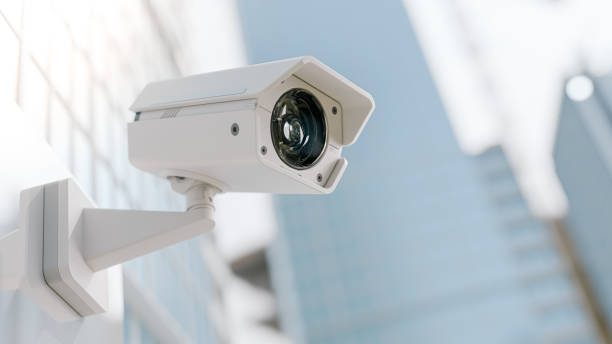The rise of smart cities has transformed urban living by integrating advanced technologies like artificial intelligence (AI), the Internet of Things (IoT), and video data analytics. AI-driven video data analytics is one of the key innovations powering smart city infrastructure, delivering real-time insights, improving security, streamlining traffic management, and enhancing the overall quality of urban life.
In this article, we will explore how AI plays a crucial role in video data analytics for smart cities, its applications across various urban sectors, and the transformative impact it is having on city management.
What is AI in Video Data Analytics?
AI in video data analytics refers to the application of machine learning algorithms, deep learning, and computer vision to analyze video footage. Unlike traditional video surveillance, AI-powered systems do not rely on human observation; instead, they automatically detect, interpret, and respond to events in real-time.
These systems can process massive amounts of video data from surveillance cameras, traffic cameras, drones, and other devices, extracting valuable information such as traffic flow, criminal activities, infrastructure condition, and public behavior.
Applications of AI Video Analytics in Smart Cities
AI Video analytics for smart cities has a broad range of applications that enhance urban infrastructure and management. From optimizing traffic flow to improving public safety, this technology is revolutionizing how cities operate. Here are the key areas where AI video analytics is making a significant impact:
1. Traffic Management and Optimization
One of the major applications of AI video analytics is traffic management. In smart cities, AI-powered cameras can monitor traffic flow and congestion patterns. By analyzing real-time data, these systems can adjust traffic signals dynamically, optimizing traffic flow and reducing bottlenecks. AI can also help identify accidents and irregular traffic behaviors, allowing authorities to respond more quickly and prevent further disruptions.
Furthermore, AI video analytics can collect data on road usage, vehicle counts, and traffic patterns. This data is invaluable for urban planners, enabling them to make data-driven decisions about road construction, public transportation routes, and parking infrastructure.
2. Public Safety and Crime Prevention
AI video analytics is transforming public safety and crime prevention in smart cities. Traditional surveillance systems require human operators to monitor footage, but AI systems can automatically detect suspicious activities, such as loitering, trespassing, or unusual movements, and send real-time alerts to law enforcement. This can lead to faster response times and better crime prevention.
Facial recognition, object detection, and behavior analysis technologies also help identify potential threats, allowing cities to enhance security without increasing manpower. AI video analytics for smart cities ensures that public spaces are safer, minimizing criminal activities and safeguarding residents.
3. Environmental Monitoring
Smart cities rely on AI video analytics to monitor environmental conditions. AI-powered cameras can observe various factors, including air quality, water levels, and waste management. For example, video analytics software can monitor rivers, lakes, and reservoirs for changes in water levels, alerting authorities in the event of potential floods.
Cameras equipped with AI can also detect illegal dumping activities, ensuring that waste disposal regulations are followed and that the city’s environment remains clean and sustainable. These insights help in creating greener, more sustainable urban spaces, which are critical in combating climate change.
4. Crowd Management and Public Event Security
In large public gatherings, such as concerts, festivals, or sports events, managing crowds effectively is crucial to maintaining public order and safety. AI-driven video analytics can track crowd density, movement, and behavior, alerting authorities if any unusual activities or potentially dangerous situations arise. By analyzing patterns, it can detect stampedes or overcrowding before they become critical, allowing event organizers or city officials to take preventive actions.
Moreover, these systems can help plan for future events by analyzing past data on crowd flow and congestion points, ensuring smooth operations in the future.
5. Infrastructure Monitoring and Maintenance
Infrastructure health is vital to the efficient functioning of a city. AI video analytics can automatically detect structural issues, such as cracks in bridges, roads, and buildings. By continuously monitoring these structures through video data, AI can predict potential failures and recommend maintenance before problems escalate. This proactive approach helps cities save costs on emergency repairs and enhances the longevity of critical infrastructure.
Drones equipped with AI-powered cameras can also monitor large infrastructure projects and construction sites, improving safety and reducing the need for manual inspections.
6. Smart Parking Systems
Finding parking in a busy city can be time-consuming and frustrating. AI video analytics helps streamline parking management by identifying available spots in real-time and guiding drivers to the nearest open space. Smart parking systems equipped with AI technology can monitor parking usage trends, allowing cities to optimize space allocation and reduce traffic caused by vehicles searching for parking.
In addition to benefiting drivers, this data provides insights for city planners to manage and expand parking infrastructure based on demand.
7. AI Video Analytics for Smart Cities’ Emergency Response
During emergencies like fires, accidents, or natural disasters, AI video analytics provides real-time updates on the situation. AI systems can detect hazards such as smoke, fire, or abnormal crowd behavior and send immediate alerts to emergency responders. This helps first responders act quickly and efficiently, potentially saving lives and reducing damage.
For example, AI video analytics can be integrated into fire detection systems, alerting the authorities the moment smoke or flames are detected in public spaces, industrial areas, or residential buildings.
Advantages of AI Video Analytics for Smart Cities
The application of AI in video data analytics for smart cities brings numerous benefits, including:
- Real-Time Insights and Faster Decision-Making
AI-powered video analytics systems process data in real-time, allowing city officials to respond to issues immediately. Whether it’s adjusting traffic signals to alleviate congestion or deploying law enforcement to a potential crime scene, AI enhances decision-making processes with timely information.
- Cost-Effective Solutions
The automation of tasks, such as monitoring public spaces, traffic, and infrastructure, reduces the need for large human teams. AI video analytics offers a cost-effective solution to managing a city’s operations by minimizing human errors and providing round-the-clock monitoring.
- Improved Citizen Safety and Quality of Life
By automating crime detection, traffic management, and environmental monitoring, AI video analytics directly improves the quality of life for residents. It reduces crime rates, ensures smoother traffic flow, and maintains cleaner and safer public spaces.
- Data-Driven Urban Planning
Data collected from AI video analytics can be used by city planners to create smarter, more efficient urban environments. From optimizing public transport routes to managing pedestrian zones, this data enables the creation of more liveable cities.
Challenges in Implementing AI Video Analytics in Smart Cities
Despite its advantages, there are challenges associated with implementing AI video analytics in smart cities, including:
- Privacy Concerns: The use of AI video analytics raises concerns about citizen privacy. Surveillance cameras can track and record movements, raising issues of data security and consent.
- High Infrastructure Costs: Installing and maintaining AI-powered surveillance systems can be expensive, especially for smaller cities with limited budgets.
- Complexity and Skill Requirements: Implementing AI systems requires specialized knowledge in machine learning, data analytics, and video processing. Cities may need to invest in training or hire experts to operate these systems effectively.
Conclusion
With each passing time, smart cities are continuously evolving. Right from optimizing congestion flow to revolutionizing retail strategies, Footfall analytics powered by AI has major functionalities. As the leading AI video analytics software development company, Nextbrain harnesses the power of footfall analytics to unveil new levels of sustainability. AI-powered data analytics empower organizations with enhanced decision-making and real-time control. This approach reduces infrastructure demands and minimizes data transfer volumes from servers to cameras, streamlining operations effectively.












